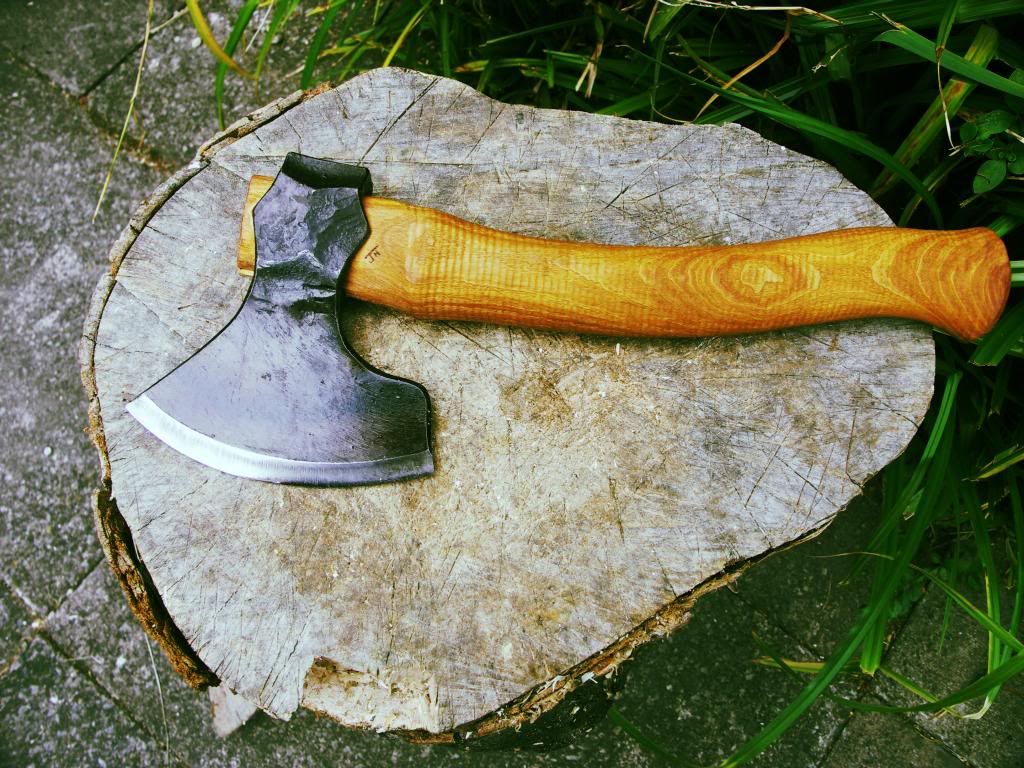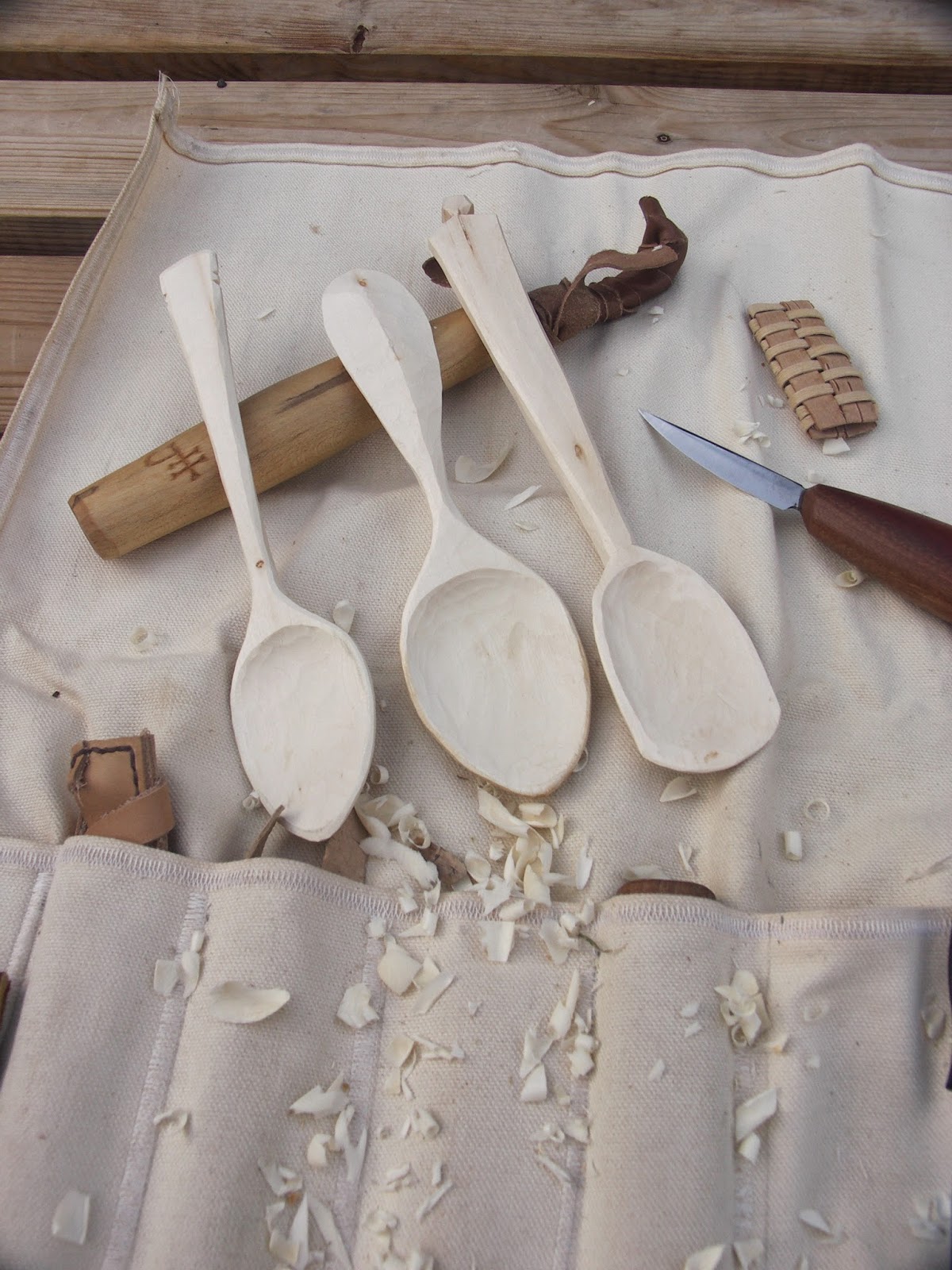I should begin by apologising for being so brazen in flaunting the fact that I am on school holidays for the next 6 weeks but, in my defense, just bear in mind that that means that when I'm not on holiday I have to do what teachers do - enough said.
So, to start off with I thought I would put legs on the chopping block that I use in my back garden for most of my axe work. I put legs on it once before by cutting angled channels and then chamfering the legs. I was very proud of it, until the block dried out a bit and the edges of the channels broke off. For the last year or more it has simply sat on the low wall in my garden.
I began by drilling three holes in the base of the stump using a scotch-eyed auger. It worked well and I was amazed at the moist, fragrant sawdust that came out. However, it wasn't until I had added the legs that I realized I hadn't put enough angle on the holes and what I ended up with was like something out of the War of the Worlds.
 |
| Too high, but legs too close together - liable to fall over. |
Next Morning, I sawed the legs back off, drilled three new holes and tried again - much better.
Tuesday this week I went with my daughter to Melton Mowbray Farmers Market. I only get to go during school hols so I'm usually keen to go first week. I was going, ostensibly, to sell these little beauties for a friend:
His working ferret had sired a litter of 12 cobs, all of which were healthy and happy, but he couldn't keep them all - they were costing him a fortune in cat food. What I wasn't expecting was how gooey Chloe went once she saw the chicks and ducklings in the feather auction, and so we came home with these:
 |
| Admittedly cute, but somewhat distracting. They are black Pekin pullets - I bet they're both roosters, but until they start crowing and scrapping I'm happy for the kids to enjoy them. |
Anyway, I have got some carving done this week. Firstly, an attempt at a kuksa in lime. I've only ever made one before and it was a valuable lesson in not undertaking such extensive hand carving activities from fairly well seasoned oak! I have long been a fan of these traditional Scandinavian drinking bowls and particularly admire those of
Jon Mac and
Alexander Yerks - both exceptional carvers - you've got to check out their kuksas.
It's not finished - I've had it wrapped in newspaper to dry out a bit as it was beginning to split on the lip - exactly the same spot my first one split. It's a simple design with a beaver-tail handle.
I'm not so keen on the colour either, but once it's finished and has some form of decoration on, I guess it will be ok for a second attempt. I really must do some more in the future, but need a gouge instead as it's just too hard to do with a crook knife - hours of hollowing out!
I didn't carve all ten of these from scratch this week - about four, I think, but all were trimmed and cleaned up a bit, ready to take to the
National Forest Wood Fair.
Ten eating spoons in ash or willow.
 |
| These eating spoons are in willow - long but very thin and feel lovely in hand. I like to crank my spoons but, as you can see, there's hardly any crank on these. |
 |
| 12" Serving spoons in willow. - I haven't told the story of how I came about this willow yet, but that will have to wait for another post. I love the stripes that have come through on these. |
 |
| Again in willow - a spatula, a coffee spoon and a double cranked eating spoon. |
This next spoon is my favourite of the bunch. It's nothing special, as such, except that my 9 year son asked me if I would carve him a spoon to eat with - my kids are not really interested otherwise - so I was really thrilled to be able to put a bunch of spoons out and say 'take your pick'. As it happened, the spoon he picked which I had carved some time ago out of ash, was not very good for actually eating with, the bowl was too deep and you would struggle to get your top lip into it, so I made one exactly the same (sans décor) from willow with a shallower bowl which he has tried in his mouth several times as I was making it to ensure it was right for him. It's only 4 3/4 inches long and once dry and oiled I will carve some design or other on it.






















































